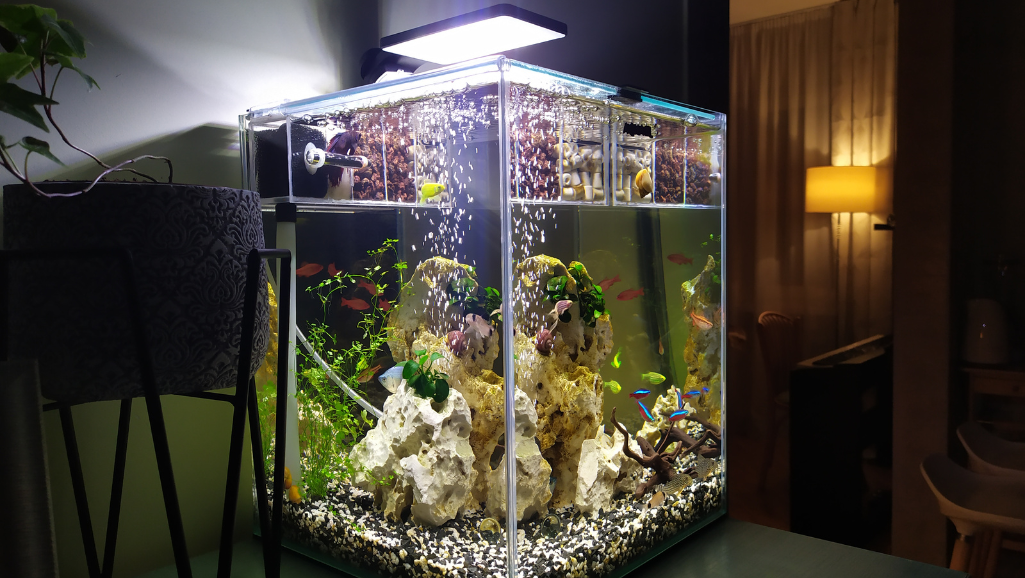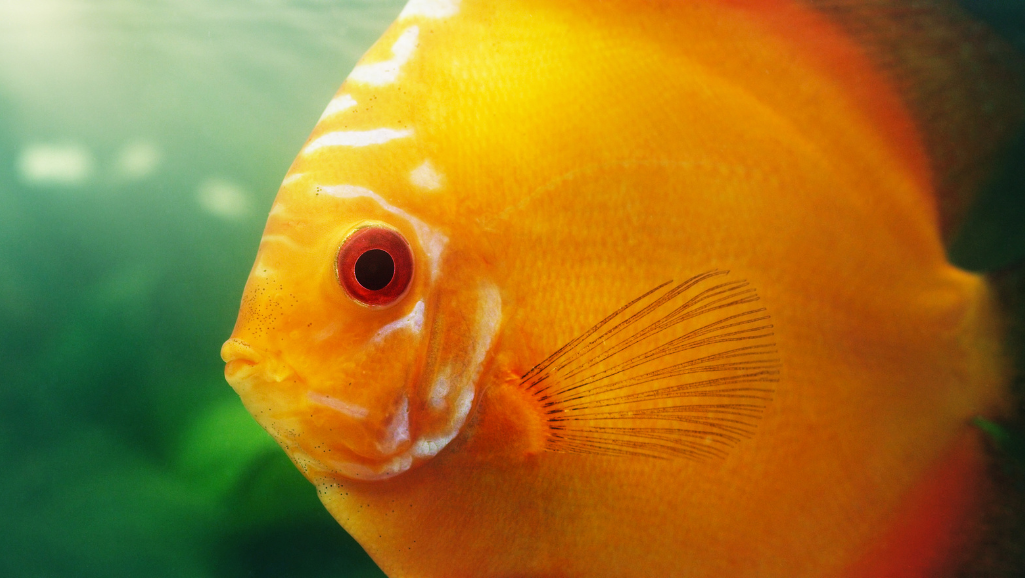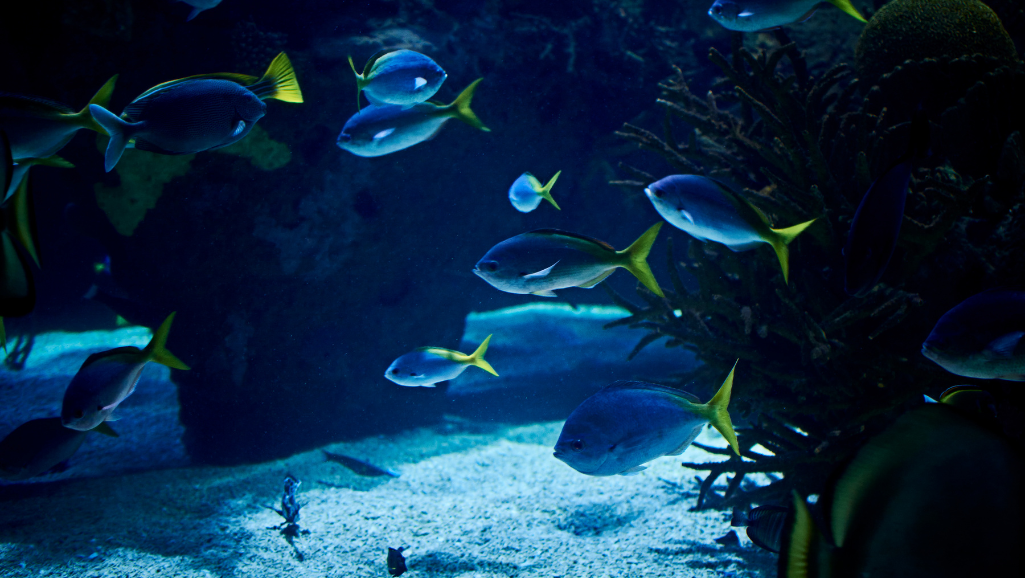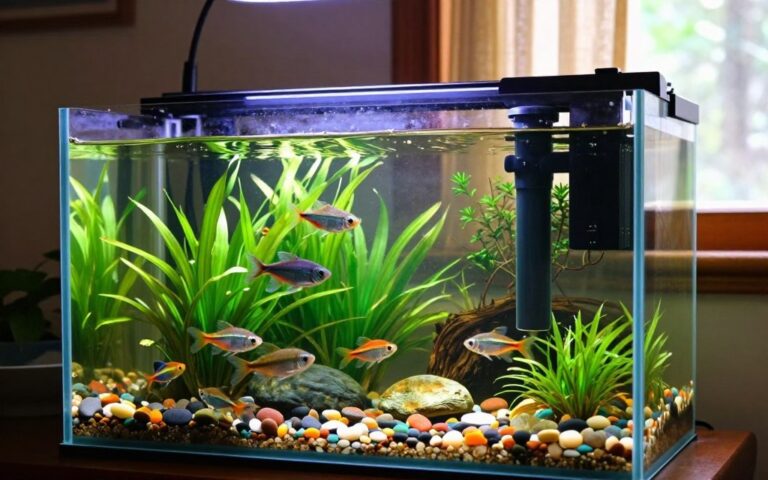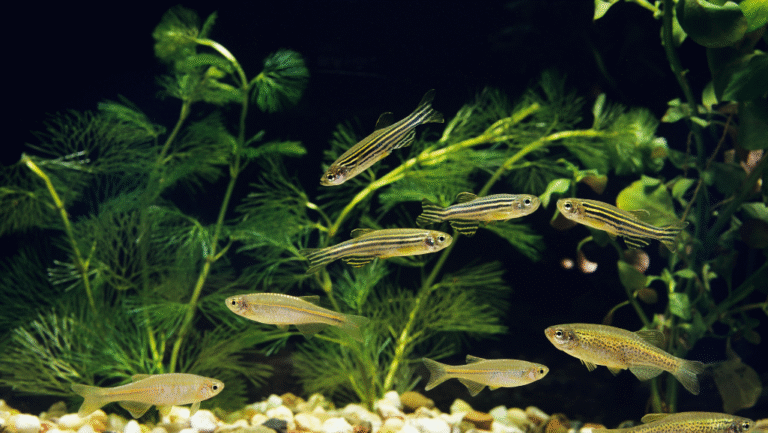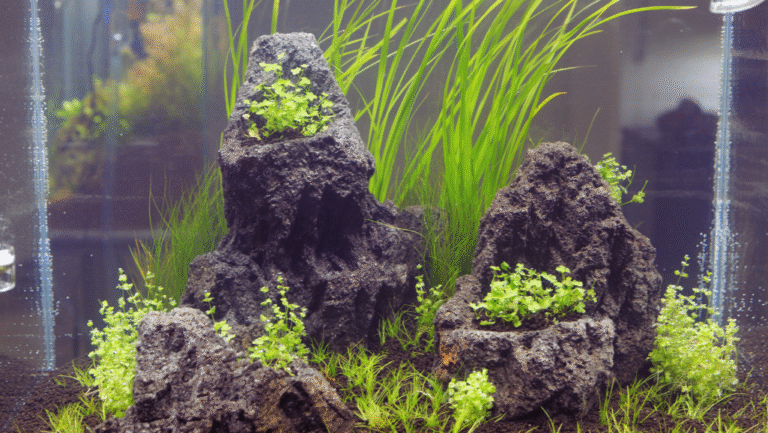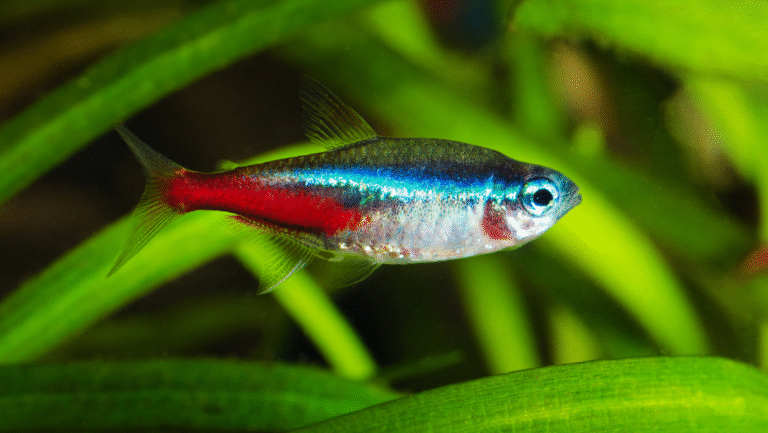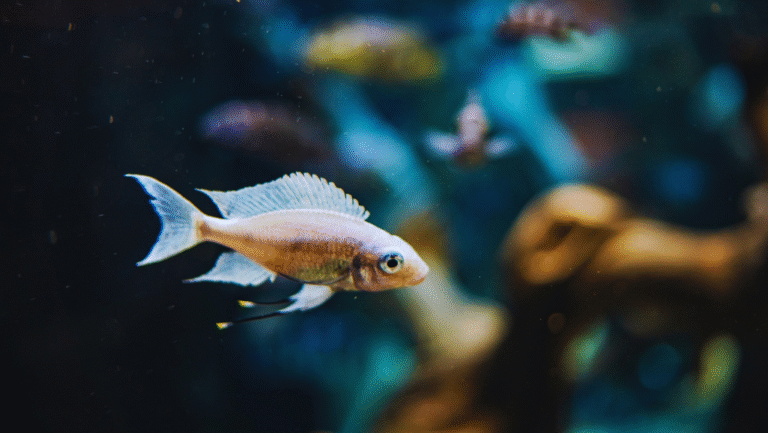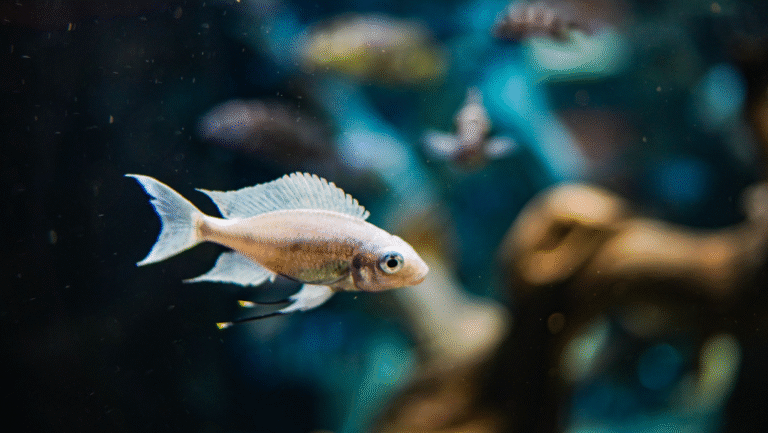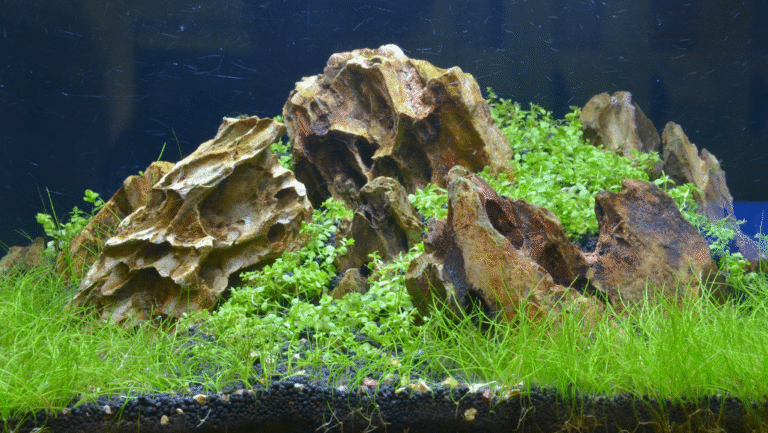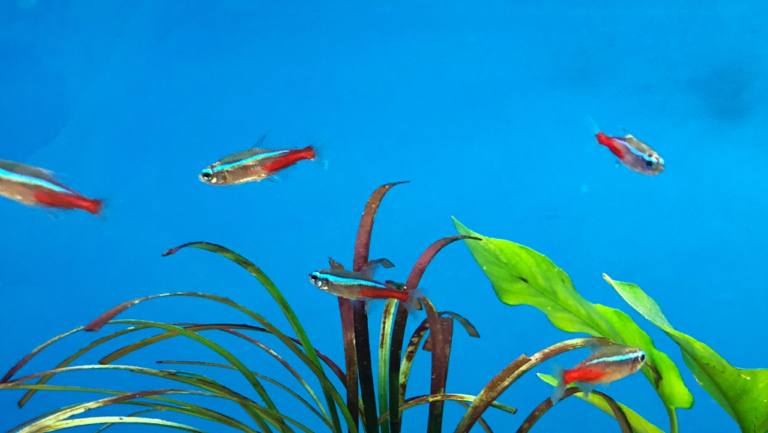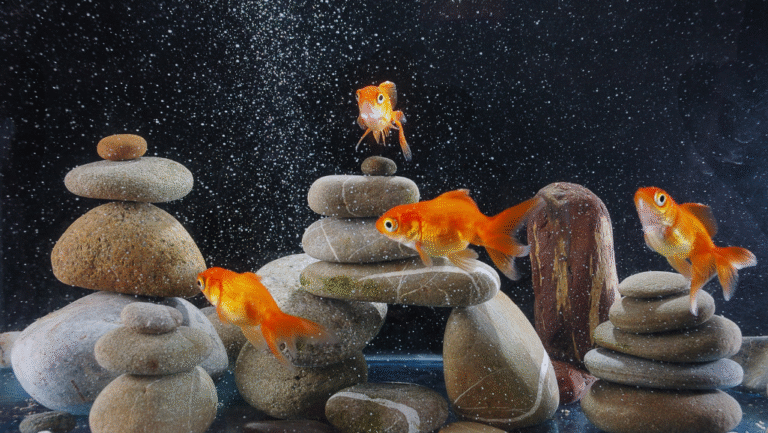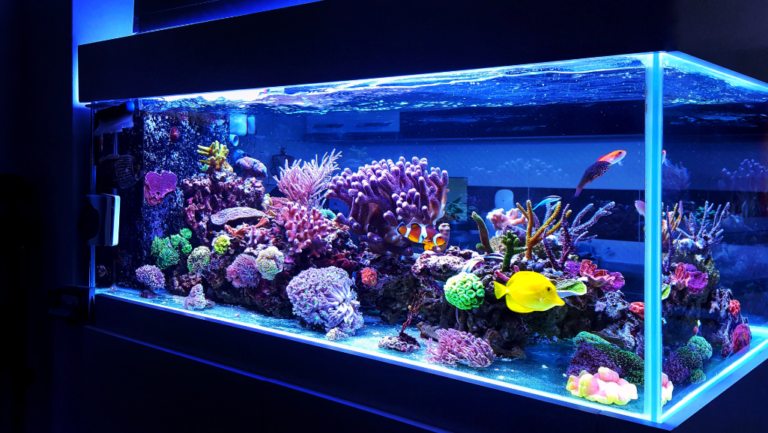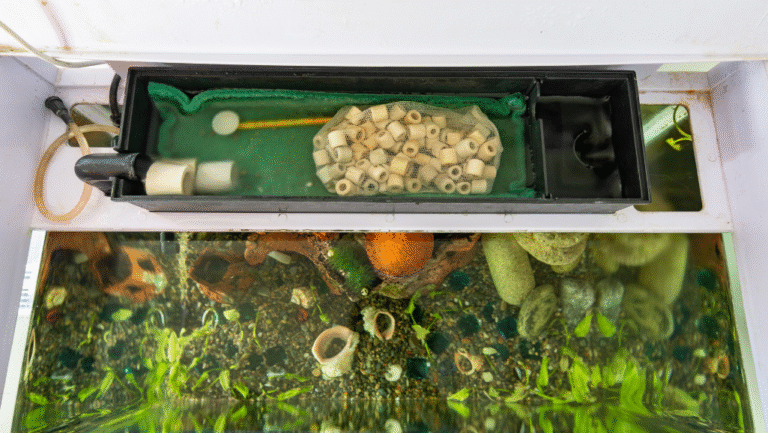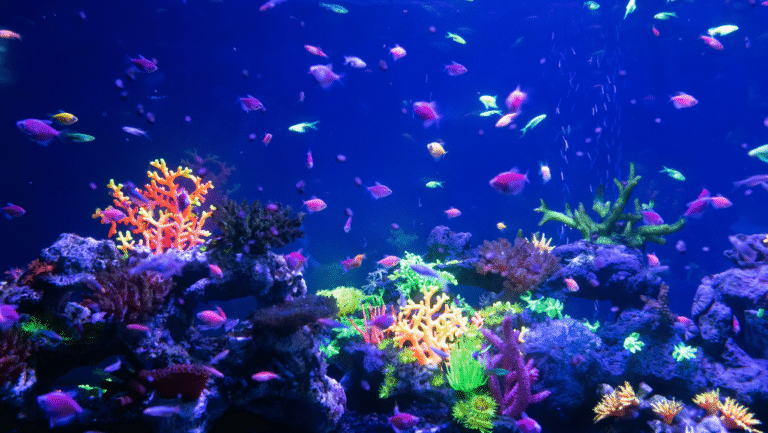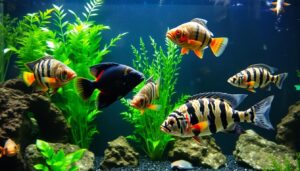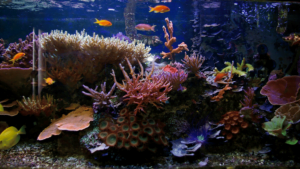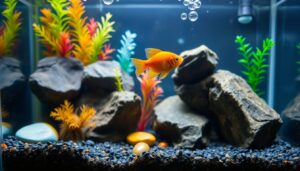Starting your first aquarium is exciting and rewarding. This guide will help you set up a thriving aquatic environment. We’ll cover everything from choosing the right tank size to introducing fish.
This guide is perfect for both newbies and those with some pet care experience. You’ll learn to create a low-maintenance aquarium with hardy fish. By following these steps, you’ll enjoy the wonders of the aquatic world at home.
Key Takeaways
- Best Starter Fish Tank.
- Larger aquariums are generally more stable and easier to maintain for beginners.
- Essential equipment includes a filter, heater, lighting, substrate, and decorations.
- Proper cycling is crucial for establishing a healthy ecosystem before adding fish.
- Choose hardy, low-maintenance fish species that are compatible with each other.
- Regular water changes and monitoring water quality are key to maintaining a thriving aquarium.
Setting up a beginner aquarium needs careful planning. Choose a tank of 20 gallons or more for stability. Pick a spot that’s level, sturdy, and away from sunlight and drafts. Remember, a filled tank can weigh over 10 pounds per gallon.
Choosing the Right Aquarium Size and Location
Setting up your first aquarium is exciting. But, picking the right size and spot is key for your fish’s health. Beginners should think about space, budget, and the fish they want to keep. For beginners, tanks between twenty and thirty gallons are best.
Factors to Consider When Selecting an Aquarium Size
Choosing the right tank size is important. Bigger tanks are more stable and easier to care for. Remember, one gallon of water is needed for every inch of fish. But, a twenty-gallon tank can weigh about two hundred pounds, so make sure it can handle the weight.
Also, think about the tank’s material. Acrylic tanks are lighter and less likely to crack. Plus, a full tank can weigh a lot, so a strong stand is crucial to keep it stable.
Ideal Locations for Your Starter Fish Tank
Finding the perfect spot for your nano aquarium kit or starter tank is important. Look for a sturdy, level spot away from sunlight, air vents, and busy areas. Sunlight can cause algae and temperature issues, while busy spots can stress your fish. Make sure it’s near an outlet and water source for easy care.
“Larger tanks are preferred in the reefing hobby to avoid unstable water parameters and the need for frequent upgrades, as indicated by the individual’s experience with starting small and wanting to upgrade shortly after.”
Choosing the right tank size and spot is crucial for your fish’s health. By following this aquarium setup guide and considering these factors, you’ll create a great home for your fish. Enjoy your journey to a thriving underwater world in your home.
Essential Equipment for Your First Aquarium
Setting up your first tropical fish starter kit is exciting and rewarding. It’s important to have the right equipment for your fish’s health. Let’s look at the key items you’ll need for your easy freshwater aquarium.
Filtration Systems for Beginner Fish Tanks
A good filtration system is key for a healthy aquarium. It filters water in three stages: mechanical, chemical, and biological. For a 20-gallon tank, choose filters that can handle 60-100 GPH to keep water fresh.
When picking a filter, think about your tank’s size and the fish you’ll have.
Heating and Lighting Requirements
Most pet fish like warm water, between 75-79°F (24-26°C). You’ll need a heater that gives 3 to 5 watts per gallon. Good lighting is also important for seeing your fish and helping plants grow.
For fish-only tanks, use 1 to 2 watts per gallon of lighting. Planted tanks might need 2 to 5 watts. LED bulbs are a great choice because they save energy and last long.
Substrate, Decorations, and Other Accessories
Don’t forget about substrate and decorations when setting up your tank. Use 1 to 2 inches of non-buffering substrate per gallon to keep pH stable. Other must-haves include:
- Water conditioner to remove harmful chemicals from tap water
- Test kits for monitoring pH, ammonia, and nitrite levels
- Siphon (gravel vacuum) for water changes and cleaning
- High-quality fish food tailored to your fish species
The easiest type of aquarium to set up and maintain for beginners is the freshwater community aquarium, housing colorful and hardy tropical fish.
By choosing the right equipment for your starter aquarium kits, you’ll create a thriving underwater world. This will bring joy and peace to your home. Make sure to research your fish’s needs to give them the best environment in your easy freshwater aquarium.
Setting Up Your Aquarium Step-by-Step
Starting a thriving fish tank is all about planning. Follow these steps and use essential fish tank setup tips for a smooth start. This will help you enjoy your aquarium journey.
Preparing Your Tank and Adding Substrate
First, clean your tank with mild soap and warm water. Rinse it well. Then, add 2-3 inches (5-7.5 cm) of pre-rinsed substrate like gravel or sand. Don’t use calcium or limestone substrates as they can mess with water chemistry.
Remember, your tank will weigh almost 10 pounds per gallon when full. Make sure it’s in a spot that can handle the weight.
“The key to a successful aquarium lies in the preparation. Take your time and do it right from the start.”
Installing Filtration and Heating Equipment
Follow the manufacturer’s guide to set up your filter. Pick one that can filter the tank’s water 3-5 times an hour. Brands like EHEIM are reliable and affordable for heaters.
Use online tools to find the right heater wattage and filter flow for your tank size.
Filling the Aquarium and Adding Decor
Fill your tank with dechlorinated water and use a good water conditioner. Add decorations like rocks, driftwood, and plants to make it look natural. A planted LED light is great for plants, helping control algae.
Wait 24 hours before adding fish. This lets the equipment settle and the water reach the right temperature. Use a test kit to check water quality during this time. With care and patience, your aquarium will thrive for years.
Cycling Your New Aquarium: Establishing a Healthy Ecosystem
When you set up your fishkeeping starter kit, cycling your tank is key. This step helps create a safe space for your fish. It involves growing good bacteria that clean up harmful stuff.
The cycle can take 2-6 weeks. It’s important to test the water every 3-4 days. At first, the water should show little to no ammonia, nitrite, or nitrate. When it’s done, you’ll see no ammonia or nitrite, but some nitrate.
Start by adding a few fish slowly. If the water gets too bad, change 30% of it. Use API STRESS COAT and API QUICK START to keep things calm. Keep track of the water’s health every few days.
“The key to successful aquarium cycling is patience and consistent monitoring. By establishing a healthy ecosystem from the start, you’ll set the foundation for a thriving underwater world.”
To speed up the cycle, try using bacterial additives or old filter media. These can make your tank ready faster. This way, you’ll get to enjoy a stable and healthy aquarium sooner.
Remember, the fish-in cycling method should only be used in emergency situations, as it can be stressful for fish due to potential ammonia spikes. By following these beginner fish care tips and dedicating time to establish a healthy ecosystem, you’ll be well on your way to enjoying a beautiful and thriving aquarium.
Choosing the Best Starter Fish for Your Tank
Setting up your first aquarium means picking the right fish is key. You want fish that are easy to care and can handle different tank conditions.
Hardy and Low-Maintenance Fish Species for Beginners
Here are some top picks for beginners:
- Celestial Pearl Danios: These small fish reach a maximum size of 1 inch and prefer to live in groups of 10 or more.
- Neon Tetras: Typically reaching a size of 1–1.5 inches, these vibrant fish are best kept in schools.
- Guppies: Growing no larger than 2 inches, guppies can be housed with other compatible tank mates like neon tetras or pygmy corydoras.
- Betta Fish: While aggressive males should be housed alone, female bettas can be grouped in sororities for a beginner pet setup.
- Platies: These robust 3-inch livebearers can handle a wide range of pH levels starting from 7.0 and prefer harder waters.
“Keeping fish teaches not only responsibility but also empathy. It’s not just a pet in a tank, it’s a chance to create a miniature ecosystem that can bring life and beauty into your home.” – Unknown
Compatibility and Stocking Guidelines
When picking fish for your tank, think about compatibility between species. Some fish, like barbs and angelfish, can be semi-aggressive and may not be suitable for peaceful community tanks. Always research the temperament and size of each species before introducing them to your aquarium.
To avoid overcrowding, follow recommended stocking guidelines based on your tank size. For example, a 10-gallon tank can comfortably house up to eight pygmy corydoras or a single dwarf gourami. Goldfish, on the other hand, require at least 30 gallons of water per fish due to their potential size of 12 to 14 inches.
Remember to introduce fish gradually over several weeks, allowing the aquarium’s ecosystem to adjust and maintain balance. With careful selection and proper care, your starter fish tank will become a thriving underwater oasis that brings joy and tranquility to your home.
Introducing Fish to Your New Aquarium
Setting up your first fish tank is exciting. But, introducing new fish needs careful steps. This aquarium guide for beginners will help you. It ensures your entry-level fish tank thrives.
Proper Acclimation Techniques
Acclimating fish is key to avoid stress and shock. Start by floating the fish bag in the tank for 15 minutes. This lets the water temperatures match.
Then, slowly add aquarium water to the bag. This helps your fish get used to the new water. After, release the fish gently into the tank. Tools like Kockney Koi 4mm Clear Airline, at £3.59, can aid in this.
Quarantine Procedures for New Fish
Having a quarantine tank is smart. It stops diseases from spreading. Watch your fish for illness or stress in the quarantine tank.
Keep the water clean with proper care. Use tools like Salifert pH Profi Test Kit (£8.90) for saltwater or NT Labs Test Kits (from £8.25) for freshwater. They help monitor water quality.
Here are some tips for introducing new fish:
- Add smaller, more passive fish first, followed by larger, more territorial species.
- Introduce multiple fish at once to minimize harassment of individual newcomers.
- Feed the aquarium before introducing new fish to reduce aggression towards newcomers.
- Rearrange decorations in the aquarium before adding new fish to establish new territories and reduce stress for all tankmates.
- Provide hiding places like rocks and plants to reduce aggression and stress in the aquarium.
“A larger aquarium makes it easier to mix fish with different behaviors, as it provides more space and opportunities for establishing territories.”
Follow these tips from our fish tank guide for beginners. You’ll successfully introduce new fish to your entry-level fish tank. This will create a thriving aquatic community.
Maintenance and Care for Your Starter Fish Tank
Keeping your aquarium healthy is key for your fish’s well-being. A regular fish tank setup maintenance routine is essential. This ensures your fish live in a clean, stable home. Here are some important tips for maintaining your starter fish tank.
Regular Water Changes and Cleaning Routines
For the best water quality, change 10-25% of the tank water every 2-4 weeks. Use dechlorinated water. A gravel vacuum helps remove debris and waste, preventing toxins. Clean the tank glass, decorations, and equipment often to stop algae and keep things looking great.
For easy fish care, stick to a routine. Feed your fish once or twice a day in small amounts. Make sure the aquarium light is on for 8-12 hours. Every two weeks, change the filter cartridge and do a deeper clean of the tank and its parts.
Monitoring Water Quality and Fish Health
Testing your aquarium water regularly is crucial. Use reliable test kits to check ammonia, nitrite, nitrate, pH, and hardness levels. If any readings are off, act fast to keep your fish healthy.
A healthy aquarium is a happy aquarium. Watch water quality and fish behavior closely. This way, you can quickly fix any problems and keep your aquarium thriving.
Also, watch your fish for signs of stress, disease, or odd behavior. Look for loss of appetite, lethargy, unusual swimming, or visible injuries. If you see any red flags, seek advice from an aquarium expert or a vet who knows fish care.
By following these small fish tank ideas and care tips, you’ll create a vibrant, thriving aquatic world. It will bring joy and peace to your home.
Conclusion
Starting your first aquarium is an exciting adventure. It can add joy and peace to your home. Whether you choose a budget-friendly tank or a more advanced one, planning and picking the right supplies are key. There are many beginner kits available, making it easy to find one that fits your space, even in an apartment.
When picking your tank, think about size, filtration, heating, and lighting. A 20 to 29-gallon glass kit is great for beginners. It has enough room for fish and plants and is easy to care for. Freshwater tanks are colorful and less expensive than saltwater ones.
For a healthy tank, get good equipment like filters, heaters, and LED lights. Also, get water conditioners, test kits, gravel, and fish food. Follow a setup guide, cycle your tank, and choose easy-to-care-for fish. This will help you create a beautiful, thriving underwater world.
The world of fishkeeping is vast and always changing. As you learn and grow, you might want to try more complex setups or even saltwater tanks. Enjoy the journey, be proud of your progress, and cherish your underwater paradise.


